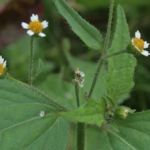Speedwell – Veronica persica 
Description: The Latin name of this pretty little blue flowered plant comes from a story of a woman, later canonized as St. Veronica who is said to have wiped the blood from the face of Jesus on his journey to Calvery. “Ever afterwards,” writes Julia W. Henshaw in Mountain Wildflowers of North America, “her kerchief bore the vera iconica, ‘the true likeness,’ of his sacred features.” “Vera iconica” is actually a mixture of Greek and Latin terms.
There are many varieties, also known as Gypsy weed and birdseye speedwell – see the song below.
- Speedwell is plentiful now in spring
- annual, sprawling plant is commonly found all over NZ grows in gardens, arable land, waste open land, rough pasture and dry river beds
- small 1 cm wide solitary flowers, where the three upper petals are bright blue and the lower petal whitish or pale blue
- the dainty little flowers open on sunny days on thin stalks
- flowers all year round
- the seedpod is heart shaped (just visible in the photo above)
- leaves – pale to medium green grow in opposite pairs and are oval, short stalked, coarsely toothed or scolloped & hairy
- stems are round, flexible & can grow 70 cm long, roots can form at the nodes – the part of the stem out of which the leaves grow
- the stems lie on the ground with the tips curving upwards they can also grow over other plants.
Song of the Gypsyweed
Speedwell to travellers!
And speedwell is me.
My roots keep me from travelling, As you can see.
Yet all those who travel With their feet on the ground
Have noticed I’ve spread
The whole world round.
I’m too small to spy
From a car or a plane.
Yet, see me or not,
I’m here just the same.
So go on your travels.
And though they may say,
“God speed,”
Don’t pass by the gifts Of the wise Gypsyweed.
from http://nettlejuice.blogspot.co.nz
Nutritional qualities
- this plant has “remarkable medicinal powers out of proportion to its size”1
- used by gypsies as a blood purifier
- removes excess mucus, soothe internal tissues, treat coughs, asthma, pleurisy
- a tea made of speedwell is used to clear sinus congestion, help eyesight and ease sore eyes. I had a swollen top eyelid and sore eye – bathing it with speedwell healed it quickly
- goes to areas of tension, especially the neck and shoulder areas and helps relax the muscles
- externally to treat skin rashes, inflammation
- contains chlorophyll, minerals, vitamins, protein, antioxidants and is another plant easy to find in the garden to add to your smoothie or chop up finely and add to salads or make a pesto.
- A handful of speedwell brought to the boil and steeped – drink as a tea or use cotton wool to dab one’s eyes as I did.
- Additional notes on Speedwell
There are several possibilities for why the plant has been well known for centuries in England. The term either refers to the flower’s speedy healing properties, its ability to spread rapidly in tilled soils, or its use in nosegays and tussie-mussies – fragrant bouquets of flowers which were often given as farewell gifts with the warm words, “Speedwell.”
from the Appalachian Independent by Mary Spalding1 Baïracli Levy, J., The Illustrated Herbal Handbook ,1977, Faber & Faber, London, p137







We have these in our yard, and I had no idea what they were. 🙂
Hello Julia. Very interesting. when you say externally to rash, what does that mean? How would it be applied? Also, what does goes to area of tension mean? Does this happen after drinking?
Thank you
Hello Jason, thank you for your questions. To use speedwell for a rash you could make a strong tea by steeping a handful of plant in boiled water and applying it to the rash. Going to areas of tension means it helps the areas that are tense relax. It could partly be taking the time to sit and drink a cup of tea is relaxing and gives one a break and then the plant itself targets the tense area. Best wishes, Julia
Hi Julia, above is very informative. I liked to learn about the history and the uses of this pretty plant. I have lots of these in my backyard and through research found out the name. Then I wanted to know more about it and I found your website. Very glad I did. I added it to my bookmarks and will certainly check other articles.
Keep up the good work.
Indeera
HI Indeera, I’m so glad you found the website and learned more about Speedwell. I too love to learn about the history of plants and how to use and appreciate them. Thank you for taking the time to write and let me know. I really appreciate it!!
Best wishes.
Hi –Q ..how to get rid of in my lawn?
HI John, thanks for writing. I am not the best person to ask on how to get rid of plants in your lawn. In defense for keeping speedwell is that the bees love the flowers. I have never seen it in a lawn so that is interesting.
To get rid of them John Tait, you could eat them! I let them grow as a ground cover in my garden, it helps keep the grass down. Unfortunately they die back when the weather gets too hot, but they come back in the Fall. How nice to know there are wild edible plants all around. Thank you for this informative article Julia.
Thanks Debra for adding this information and way to get rid of speedwell – yes eat them!
And thank you for your lovely feedback! Love it!